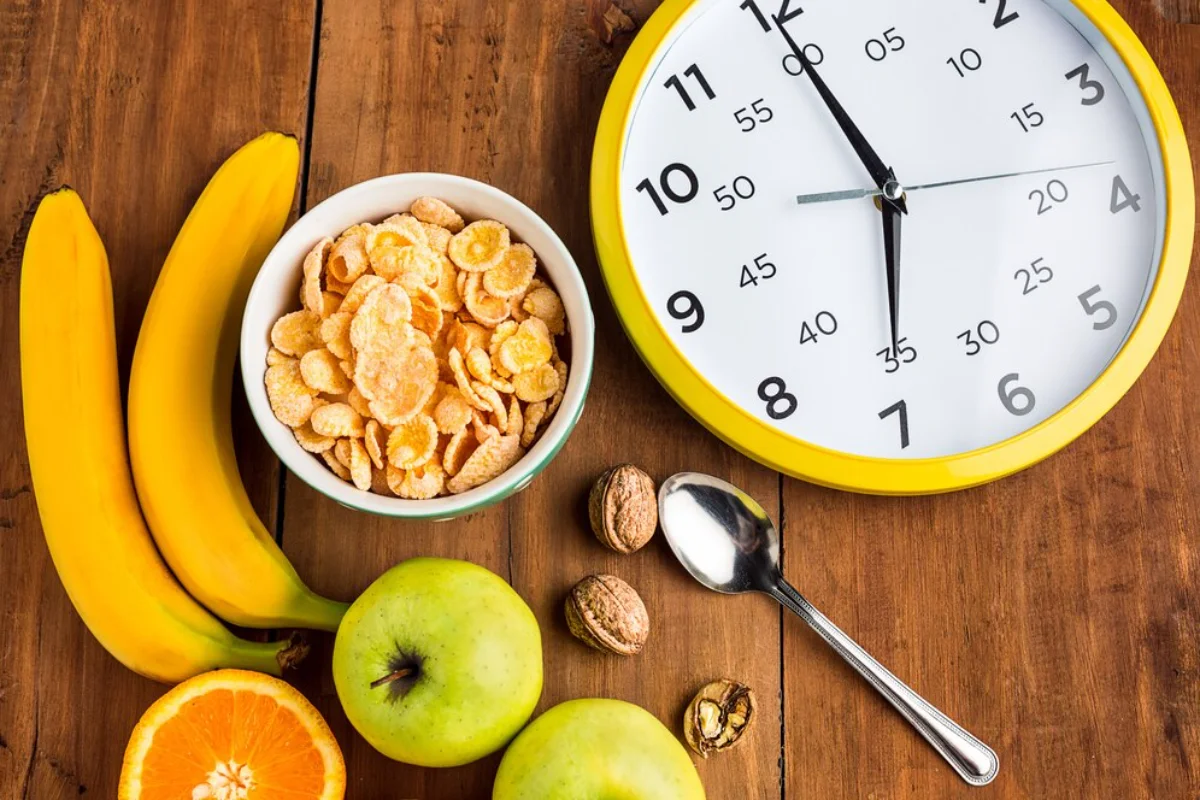
Intermittent Fasting: How It Works and Its Benefits
The show used intermittent fasting, a trend that has gained popularity in recent years. Fasting isn’t a new concept, but its more regimented version has been slowly gaining popularity, especially among those who think variety might yield more health or ease benefits. This guide explains the science of intermittent fasting, the various methods, and the numerous benefits.

Why Intermittent Fasting Matters
Intermittent fasting is more than a trend; it has solid scientific support. Understanding its relevance can help you decide if it fits into your lifestyle.
The Science Behind Intermittent Fasting
Intermittent fasting alternates between eating and fasting. This cycle optimises your metabolism, aiding weight loss, boosting mental clarity, and improving health. When fasting, your body shifts from using glucose to burning stored fat, which is called ketosis. This switch is crucial for many health benefits.
Real-Life Applications and Benefits
Intermittent fasting is flexible and fits various lifestyles. Whether you’re busy, into fitness, or want to improve your health, it can adapt to your needs. Benefits include better blood sugar control, reduced inflammation, and enhanced brain function.

Step-by-Step Guide to Intermittent Fasting
To start intermittent fasting, understand the different methods and choose one that matches your lifestyle and goals. This section guides you in fasting correctly to maximise benefits.
Understanding Fasting Windows
Fasting windows are key to intermittent fasting. These are times when you don’t eat. Common methods include:
- 16/8 Method: Fast for 16 hours and eat in an 8-hour window.
- 5:2 Method: Eat normally for five days, then limit calories to 500-600 on two non-consecutive days.
- Eat-Stop-Eat: Fast for 24 hours once or twice a week.
- Alternate-Day Fasting: Fast every other day, with a small meal on fasting days.
Pick a method that fits your lifestyle and goals.
Preparing for Your Fasting Journey
Before starting intermittent fasting, prepare mentally and physically. Here are steps to get going:
- Consult a Healthcare Professional: If you have health issues or doubts about fasting, seek advice.
- Set Clear Goals: Identify your main reason for fasting—weight loss, energy, or better health.
- Choose a Fasting Method: Pick a sustainable method for the long term.
- Plan Your Meals: Focus on nutrient-rich foods during eating windows.
Navigating Common Challenges
Intermittent fasting can be challenging at first. Common issues include hunger, energy dips, and social pressures. Use these strategies to overcome obstacles:
- Stay Hydrated: Drink plenty of water to reduce hunger and maintain energy.
- Gradual Adjustment: Start with shorter fasts and slowly increase the duration.
- Mindful Eating: During eating windows, choose balanced meals with protein, healthy fats, and complex carbs.
- Social Support: Connecting with friends or groups and practising intermittent fasting for motivation.

Additional Expert Tips & Common Mistakes to Avoid
Adopting best practices and avoiding common pitfalls for a successful intermittent fasting experience.
Best Practices for Effective Fasting
Follow these expert tips to enhance your fasting journey:
- Listen to Your Body: Pay attention to hunger cues and adjust fasting as needed.
- Prioritise Sleep: Get enough rest to aid recovery and metabolism.
- Incorporate Physical Activity: Regular exercise complements fasting and boosts health.
- Monitor Progress: Track your fasting schedule, energy levels, and health changes.
Common Mistakes and How to Avoid Them
Avoid these mistakes to ensure a smooth fasting experience:
- Overeating During Eating Windows: Avoid overindulgence, which can negate fasting benefits.
- Neglecting Nutrient Intake: Focus on balanced meals to prevent deficiencies.
- Inconsistent Fasting Patterns: Keep a regular schedule to help your body adapt.
Advanced Insights and Expert Recommendations
Explore advanced insights and expert recommendations for a deeper understanding of intermittent fasting.
Intermittent Fasting and Longevity
Research suggests intermittent fasting may positively impact longevity. It could reduce oxidative stress and inflammation, potentially extending lifespan and enhancing quality of life. Further studies are needed to understand its long-term effects fully.
Tailoring Fasting to Individual Needs
There is no one-size-fits-all approach to intermittent fasting. Tailoring your approach for one patient can enhance adherence and outcomes. That might include tweaking fasting windows, types of food eaten, and incorporating mindful practices like meditation or yoga.
Embracing Intermittent Fasting for a Healthier Future
Suppose you want to make intermittent fasting for a healthy lifestyle. Once you grasp how this works and what it can do, you decide if (and when) you fast. And how to do intuitive eating with the right tools. If achievable is overweight reduction, enhanced mental alertness or just better health, fasting is the easiest way to spawn a better health future.
Intermittent Fasting – You can try this method immediately. Tell us about your personal experience in the comments!